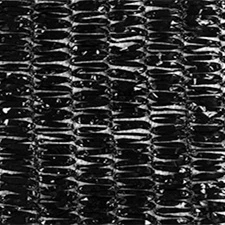-
 Afrikaans
Afrikaans -
 Albanian
Albanian -
 Amharic
Amharic -
 Arabic
Arabic -
 Armenian
Armenian -
 Azerbaijani
Azerbaijani -
 Basque
Basque -
 Belarusian
Belarusian -
 Bengali
Bengali -
 Bosnian
Bosnian -
 Bulgarian
Bulgarian -
 Catalan
Catalan -
 Cebuano
Cebuano -
 China
China -
 Corsican
Corsican -
 Croatian
Croatian -
 Czech
Czech -
 Danish
Danish -
 Dutch
Dutch -
 English
English -
 Esperanto
Esperanto -
 Estonian
Estonian -
 Finnish
Finnish -
 French
French -
 Frisian
Frisian -
 Galician
Galician -
 Georgian
Georgian -
 German
German -
 Greek
Greek -
 Gujarati
Gujarati -
 Haitian Creole
Haitian Creole -
 hausa
hausa -
 hawaiian
hawaiian -
 Hebrew
Hebrew -
 Hindi
Hindi -
 Miao
Miao -
 Hungarian
Hungarian -
 Icelandic
Icelandic -
 igbo
igbo -
 Indonesian
Indonesian -
 irish
irish -
 Italian
Italian -
 Japanese
Japanese -
 Javanese
Javanese -
 Kannada
Kannada -
 kazakh
kazakh -
 Khmer
Khmer -
 Rwandese
Rwandese -
 Korean
Korean -
 Kurdish
Kurdish -
 Kyrgyz
Kyrgyz -
 Lao
Lao -
 Latin
Latin -
 Latvian
Latvian -
 Lithuanian
Lithuanian -
 Luxembourgish
Luxembourgish -
 Macedonian
Macedonian -
 Malgashi
Malgashi -
 Malay
Malay -
 Malayalam
Malayalam -
 Maltese
Maltese -
 Maori
Maori -
 Marathi
Marathi -
 Mongolian
Mongolian -
 Myanmar
Myanmar -
 Nepali
Nepali -
 Norwegian
Norwegian -
 Norwegian
Norwegian -
 Occitan
Occitan -
 Pashto
Pashto -
 Persian
Persian -
 Polish
Polish -
 Portuguese
Portuguese -
 Punjabi
Punjabi -
 Romanian
Romanian -
 Russian
Russian -
 Samoan
Samoan -
 Scottish Gaelic
Scottish Gaelic -
 Serbian
Serbian -
 Sesotho
Sesotho -
 Shona
Shona -
 Sindhi
Sindhi -
 Sinhala
Sinhala -
 Slovak
Slovak -
 Slovenian
Slovenian -
 Somali
Somali -
 Spanish
Spanish -
 Sundanese
Sundanese -
 Swahili
Swahili -
 Swedish
Swedish -
 Tagalog
Tagalog -
 Tajik
Tajik -
 Tamil
Tamil -
 Tatar
Tatar -
 Telugu
Telugu -
 Thai
Thai -
 Turkish
Turkish -
 Turkmen
Turkmen -
 Ukrainian
Ukrainian -
 Urdu
Urdu -
 Uighur
Uighur -
 Uzbek
Uzbek -
 Vietnamese
Vietnamese -
 Welsh
Welsh -
 Bantu
Bantu -
 Yiddish
Yiddish -
 Yoruba
Yoruba -
 Zulu
Zulu
steel fibers in concrete
The Role of Steel Fibers in Concrete Enhancing Performance and Durability
Concrete has long been the backbone of modern construction, known for its strength, durability, and versatility. However, traditional concrete has its limitations, particularly in terms of tensile strength and crack resistance. To address these challenges, the incorporation of steel fibers into concrete mixtures has emerged as a game-changing solution. Steel fibers strengthen concrete in various ways, improving its overall performance, durability, and lifespan.
Understanding Steel Fibers in Concrete
Steel fibers are short, discrete pieces of steel that can be added to concrete during the mixing process. Generally, these fibers vary in length, diameter, and aspect ratio, which refers to the ratio of length to diameter. Commonly used steel fibers range from 30 mm to 50 mm in length and 0.2 mm to 1 mm in diameter. Their primary function is to control cracking, enhance the mechanical properties of concrete, and increase its resilience under various loading conditions.
Improving Tensile Strength and Toughness
One of the significant advantages of incorporating steel fibers into concrete is the notable enhancement in tensile strength. Standard concrete exhibits a high compressive strength but is relatively weak in tension, often resulting in cracking. Steel fibers help bridge these cracks by redistributing stress and providing tensile support. This results in a tougher material, which can absorb more energy before failure, thus providing a critical advantage in structural applications subjected to dynamic loads or impact forces.
Enhanced Crack Resistance
The addition of steel fibers significantly improves the crack resistance of concrete. Cracks can occur due to a variety of factors, such as shrinkage, temperature changes, and applied loads. Steel fibers work to minimize the propagation of these cracks by holding the concrete matrix together through mechanical interlocking and friction. This results in a more robust concrete that can withstand the various stresses and strains it will experience throughout its life cycle.
steel fibers in concrete

Increased Durability
Concrete structures are often exposed to harsh environmental conditions, such as freeze-thaw cycles, de-icing salts, and chemical attacks. The presence of steel fibers enhances the overall durability of concrete by improving its resistance to such environmental factors. The fibers help reduce permeability, creating a denser material that is less susceptible to water ingress and subsequent damage from freeze-thaw cycles or chemical reactions. Consequently, structures constructed with steel fiber-reinforced concrete (SFRC) tend to have a longer service life, reducing maintenance costs and enhancing sustainability.
Applications of Steel Fiber-Reinforced Concrete
The versatility of steel fiber-reinforced concrete allows it to be used in various applications across multiple industries. In the construction of industrial floors, steel fibers provide the necessary strength and enhance resistance to abrasion caused by heavy machinery. Similarly, they are employed in pavements and overlays where improved impact handling is crucial.
In precast and ready-mix concrete applications, steel fibers allow for greater design flexibility. They enable the production of complex shapes and structures with reduced cracking risk, making them ideal for architectural and artistic applications. Additionally, in seismic-prone areas, SFRC can enhance the ductility and energy absorption capacities of structures, offering improved performance during earthquakes.
Conclusion
The addition of steel fibers to concrete represents a significant advancement in construction technology. By enhancing tensile strength, crack resistance, and durability, steel fibers address many of the limitations associated with conventional concrete. Their versatility across various applications underscores their increasing importance in modern construction practices. As the demand for high-performance, durable concrete continues to rise, the role of steel fibers in concrete will likely expand, contributing to safer, more resilient infrastructures worldwide. With ongoing research and development, the potential of steel fibers in concrete is only just beginning to be fully realized, promising exciting advancements for the construction industry in the years to come.
-
Shipping Plastic Bags for Every NeedNewsJul.24,2025
-
Safety Netting: Your Shield in ConstructionNewsJul.24,2025
-
Plastic Mesh Netting for Everyday UseNewsJul.24,2025
-
Nylon Netting for Every UseNewsJul.24,2025
-
Mesh Breeder Box for Fish TanksNewsJul.24,2025
-
Expanded Steel Mesh Offers Durable VersatilityNewsJul.24,2025











